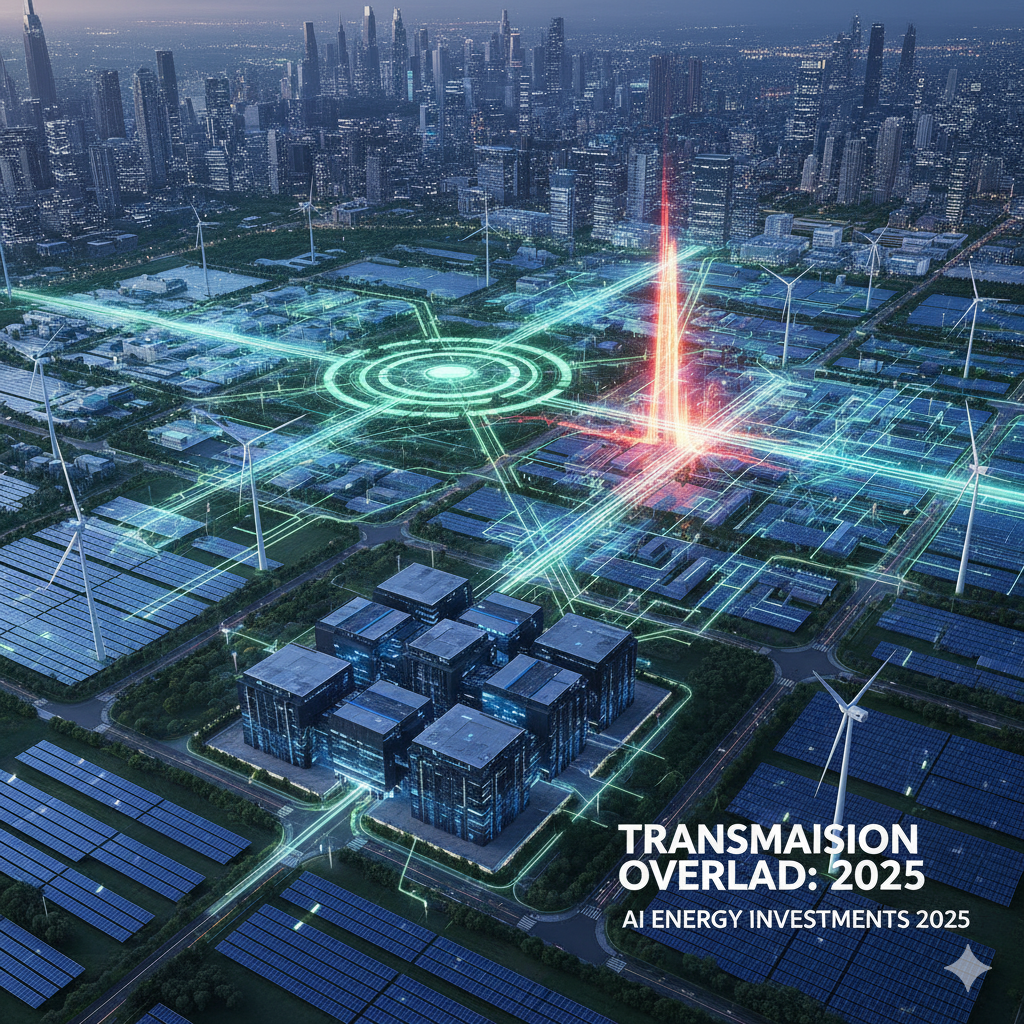
AI Energy Investments 2025: Navigating Bottlenecks
AI-Driven Energy Investments Amid Bottlenecks
Did you know that global electricity demand from data centers is projected to more than double by 2030, surging past 945 TWh, largely driven by the explosive growth of artificial intelligence? This staggering statistic highlights the urgent intersection of AI innovation and energy infrastructure. As AI technologies advance, they demand unprecedented power, creating both challenges and opportunities for investors. In this blog post, we delve into AI energy investments 2025, exploring how data center power needs are reshaping the landscape. With bottlenecks in grid capacity and supply chains looming, savvy investors are turning to green tech finance to capitalize on this trend. Whether you’re a seasoned investor or new to the sector, understanding these dynamics can help you navigate profitable paths in sustainable energy solutions.
Background on AI’s Energy Demands
The rise of AI has transformed industries, but its energy footprint is equally revolutionary. Data centers, the backbone of AI operations, consume vast amounts of electricity to process complex algorithms and store massive datasets. Projections indicate that AI-driven data centers could account for up to 2% of global electricity by 2025, with consumption reaching around 536 TWh.
This surge stems from high-performance servers optimized for AI tasks, which are far more power-intensive than traditional computing. For instance, accelerated servers for AI are expected to see electricity consumption grow by 30% annually. Investors must recognize this as a foundational shift, where AI energy investments 2025 are not just about tech but about powering the future.
Key drivers include:
- Rapid AI Adoption: Companies like Google and Microsoft are scaling AI models, increasing data center demands.
- Compute Intensity: Training large language models can require energy equivalent to thousands of households.
- Global Expansion: Emerging markets in Asia Pacific are seeing a 30.2% CAGR in AI energy market growth through 2030.

Key Bottlenecks in Energy Supply for AI
Despite the excitement, significant hurdles stand in the way of seamless AI expansion. Energy bottlenecks, including grid limitations and supply chain issues, threaten to slow progress. In the US, data centers are forecasted to consume 65 GW of power between 2025 and 2028, with a potential shortfall of 45 GW.
These constraints arise from outdated infrastructure unable to handle the load growth, which could account for 60% of total US load increase through 2030. Labor shortages in construction and permitting delays further exacerbate the problem, as building new facilities takes years.
Common bottlenecks include:
- Grid Capacity Limits: Interconnection queues have ballooned by 700% in some regions, delaying projects.
- Supply Chain Strains: Shortages in transformers and skilled workers hinder rapid scaling.
- Regulatory Hurdles: Environmental reviews and local opposition can stall developments.
Investment Opportunities in Green Tech Finance
Amid these challenges, green tech finance emerges as a beacon for AI energy investments 2025. Data centers are increasingly pursuing net-zero goals through renewable energy procurement, driving demand for solar, wind, and battery storage solutions.
This shift creates lucrative opportunities in sustainable infrastructure. For example, investments in renewable energy could generate up to $1.3 trillion in economic value by 2030 via AI-optimized grids. Companies focusing on energy-efficient chips and carbon capture are particularly attractive.
Promising areas:
- Renewable Power Plants: Funding solar farms dedicated to data centers.
- Energy Storage Tech: Batteries to manage intermittent renewable sources.
- AI-Optimized Grids: Software for efficient energy distribution, reducing waste.
Strategies for Navigating Bottlenecks in AI Investments
To thrive in this environment, investors should adopt proactive strategies. Diversifying portfolios across energy sources— from natural gas as a bridge to long-term nuclear—can hedge against bottlenecks.
Focus on companies with strong supply chain resilience and government partnerships. Recent announcements, like $92 billion in AI energy investments, underscore federal support for de-bottlenecking.
Practical tips:
- Due Diligence on Infrastructure: Evaluate projects with secured grid connections.
- ESG Integration: Prioritize firms with green certifications for better returns.
- Portfolio Diversification: Balance tech stocks with energy utilities. Explore our [/ai-investment-strategies] for in-depth analysis.
Future Outlook for AI Energy Investments 2025 and Beyond
Looking ahead, AI energy investments 2025 are poised for exponential growth, with the global AI in energy market projected to reach $54.83 billion by 2030. Bottlenecks may persist short-term, but innovations like AI-driven grid optimization could resolve them.
Expect increased focus on hybrid energy models, blending renewables with reliable baseloads. Policy shifts, including permitting reforms, will accelerate deployments.
Trends to watch:
- Sustainability Mandates: More regulations pushing green tech adoption.
- Tech-Energy Collaborations: Partnerships between AI firms and utilities.
- Global Market Shifts: Asia Pacific leading in AI energy integration.
Investors prepared for these changes can capture substantial value. Visit [/data-center-trends] for updates.
Featured Snippet: What are the main bottlenecks in AI energy investments 2025?
The primary bottlenecks in AI energy investments 2025 include grid capacity shortages, supply chain delays, and labor constraints. In the US, data centers face a 45 GW power shortfall through 2028, driven by surging demand. These issues stem from outdated infrastructure and regulatory hurdles, potentially delaying AI deployments and increasing costs for investors. (58 words)
FAQ
What are AI energy investments in 2025? AI energy investments 2025 focus on funding infrastructure like data centers, renewables, and grids to support AI’s power needs. Opportunities include green tech finance for sustainable solutions amid growing demand.
Why is energy a bottleneck for AI? Energy bottlenecks for AI arise from data center power needs exceeding current grid capacities. Projections show a 160% increase in demand by 2030, strained by supply chains and regulations.
How to invest in green tech for AI? Invest in companies specializing in renewable energy, energy storage, and AI-optimized grids. Look for firms with strong ESG ratings and partnerships with tech giants for reliable returns.
What is the future of data center power needs? Data center power needs are expected to surge, with global consumption doubling by 2030. Green tech finance will play a key role in addressing this through efficient, sustainable energy sources.
In summary, AI energy investments 2025 offer immense potential despite bottlenecks in data center power needs. By focusing on green tech finance and strategic navigation, investors can turn challenges into opportunities for sustainable growth. As AI continues to evolve, staying informed on trends like renewable integration and grid enhancements is crucial.
For more Articles, click HERE


